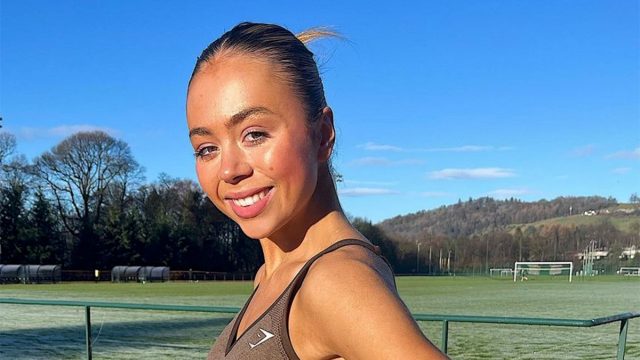7 Best Exercises to Support Your Running Routine
Running is a great workout, but there are exercises you can do to maximize the burn. Emma Mailer (@em_fitx) is an online fitness coach and influencer who specializes in running. In her many viral videos, she offers advice on how to maximize workouts that involve pounding the pavement and has amassed a large social media following because of it. In a recent TikTok she reveals the exercises she does when she isn't running that help get her body ready for runs. "Here are a range of different gym exercises I do to help improve my running," she says in the clip. We also asked The Body Network's Resident RDN, The Diet Diva, Tara Collingwood, MS, RDN, CSSD, LD/N, ACSM-CPT, a Board Certified Sports Dietitian, to explain each exercise in great detail.
Lunges
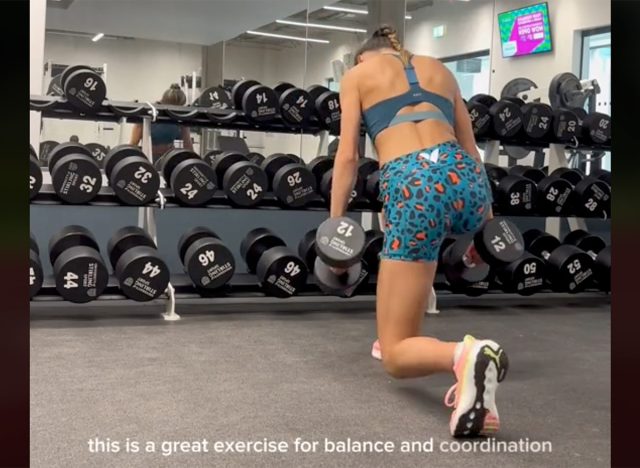
"Starting off strong, I always do lunges. This is a great exercise for balance and coordination," Emma says in the clip. To do the exercise, step forward with your right leg and lower yourself down until each leg is about 90 degree angle at the knee, instructs Collingwood. "Raise back up and step back. Repeat 10-12 times on the right leg and repeat with the left leg forward."
Hanging Leg Raises
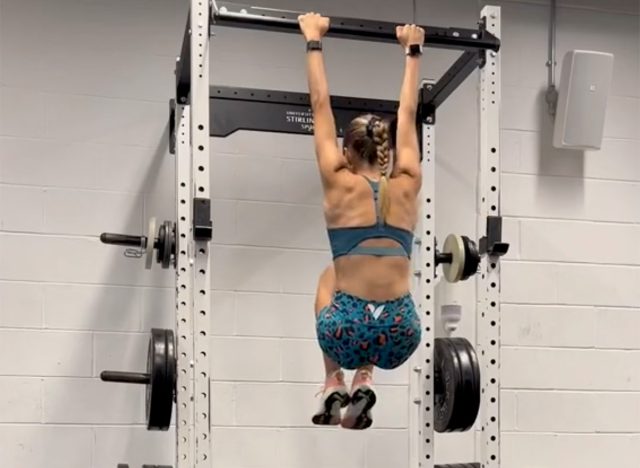
"Next up, we have hanging leg raises, a great exercise for building core stability," says Emma. Collingwood explains that to do the exercise, you should suspend yourself from a bar that is tall enough to have your legs off the ground. "Raise your knees engaging your core to a 90 degree angle toward your chest and lower legs back down to straight position. Repeat 10-12 times. To make it more difficult, do it with straight legs," she says.
RELATED: 5 Walking Tips for Weight Loss From Camila Cabello's Personal Trainer
Box Jumps
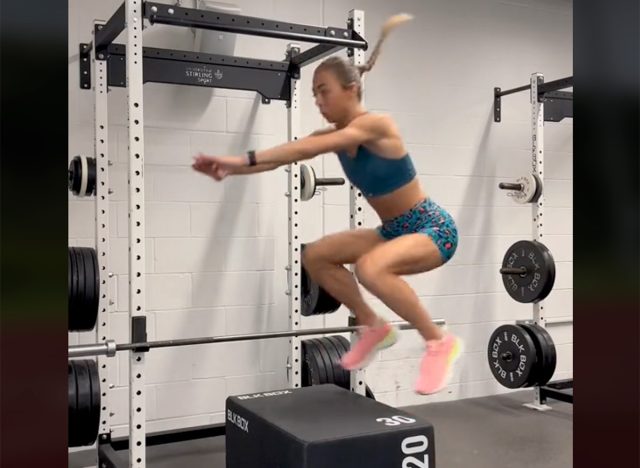
Next up, box jumps, which "helps build power and explosiveness through the legs," says Emma.
To do the exercise, Collingwood recommends using a sturdy surface like a plyo box, bench, step, or chair about 12 to 24 inches high. "Stand with feet hip width apart about 6 inches in front of the box. Bend your knees and swing your arms up as you jump onto the box. Land with both feet at the same time completely on the box. Step down carefully and repeat 10 to 12 times," she says.
Single Leg RDLs
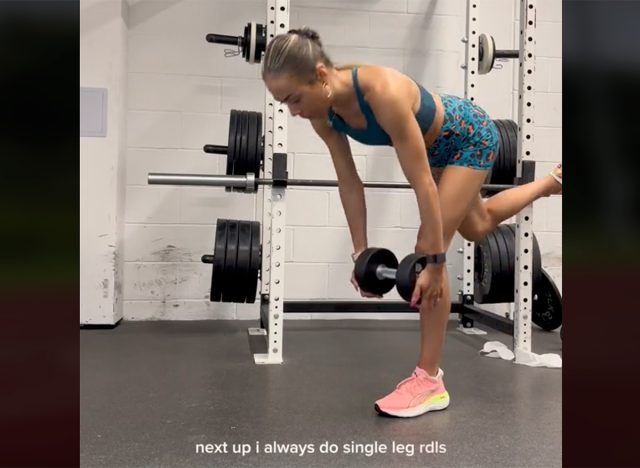
"Next up, I always do single leg RDLs. This helps improve any muscular balances that you have," says Emma. Start with the right leg pressed evenly on the floor. "Slightly bend the right knee while bending over and raising the left leg to parallel with the floor," says Collingwood. "Keep your right arm pointing down toward the floor and lower with you to almost touching the floor while the left arm extends to the side to help with balance. Keep hips and shoulders square facing forward throughout the exercise. Return to standing." She suggests repeating 10 to 12 times with the right leg and repeating on the left side. "Progression includes holding a weight in the arm pointing toward the floor," she adds.
Renegade Row
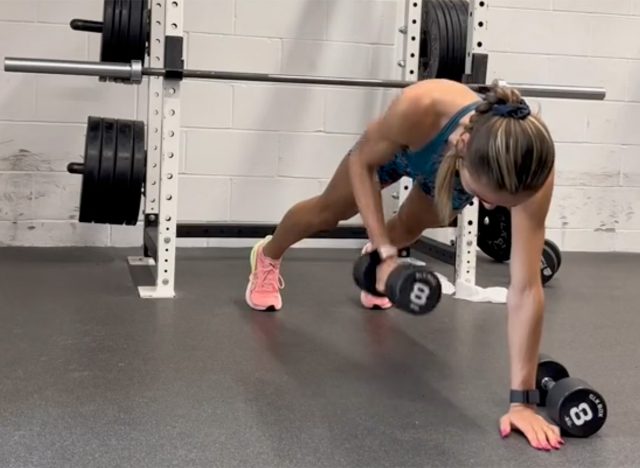
Renegade Row "helps with balance stabilization," says Emma. Get into plank position with a pair of dumbbells, "ideally hexagon shape so they don't roll," instructs Collingwood. "Place legs a bit wider than shoulder width. Tighten core and glutes. Slowly raise one arm leading with the elbow up to the torso maintaining a neutral spine without twisting or moving the feet. Slowly lower the weight down and repeat on the other side." Repeat 10 to 12 times on each side.
Step Up
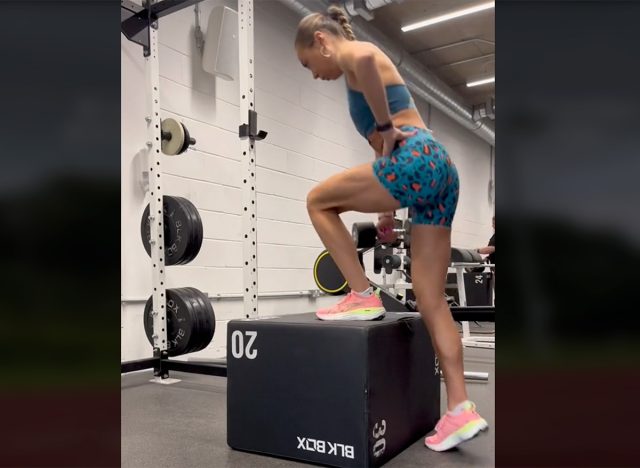
"Next up, we have step up to see the unilateral exercise, easily transferable over to running," says Emma. "Use a sturdy surface, like a plyo box, bench, step, or chair about 12 to 24 inches high," says Collingwood. "Step up with right foot onto the step surface making sure your entire foot is on the step. Bring your left foot up to meet the right foot or for more advanced raise the knee. Step back down to the beginning position with one foot at a time." Repeat 10-12 times on each foot.
RELATED: 14 Nutrition Secrets for Peak Athletic Performance
Single Leg Hip Thrust
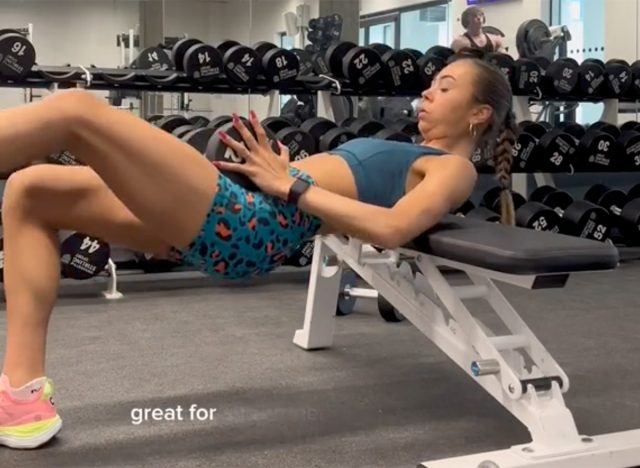
"Finishing off, I do single leg hip thrust," says Emma. Start by lying flat on the ground or lying on the bench sideways "with only shoulders resting on the bench sitting on the ground in front of the bench," instructs Collingwood. "Keep your right foot flat on the floor and bend your left leg at a 90 degree angle." If you want to make it more difficult, she recommends keeping your leg straight in front of you. "Raise hips up until parallel with the floor while squeezing glute. Lower to the starting position. Repeat 10-12 times and switch legs."
💪🔥Body Booster: Consider adding a few effective strength training exercises to your routine if you are a runner. It will help keep your body prepared for intense runs.
@em_fitx Exercises i ALWAYS do to help improve my running…… #RunTok ♬ hospital beach – Cottonwood Firing Squad
